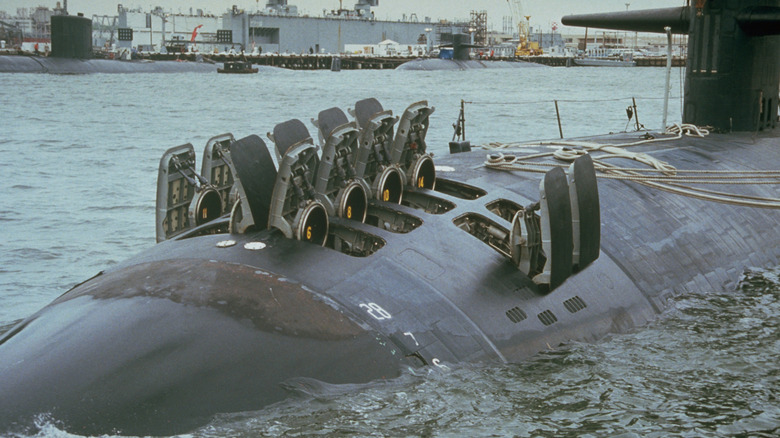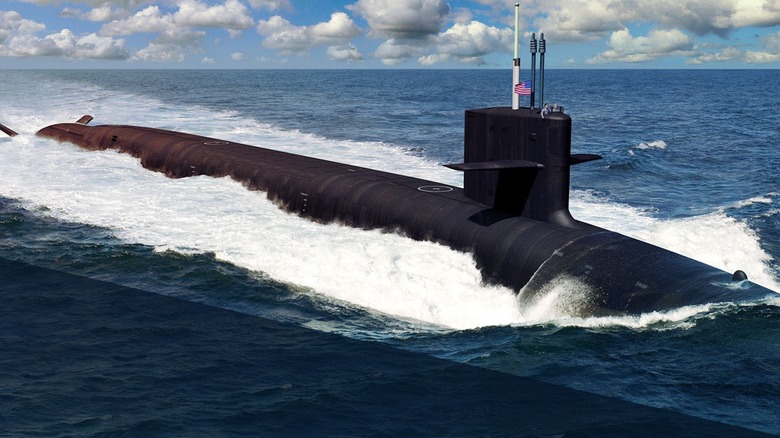Why The US Navy Continues To Launch Ballistic Missiles From Nuclear Submarines
When people think of military submarines like the Ohio-class nuclear subs used by the United States Navy, they likely picture them firing massive nuclear missiles. While these deadly, deep-diving vehicles were designed to do just that, they've fortunately never had to launch such world-ending weapons outside of testing unarmed missiles. Subs capable of firing submarine-launched ballistic missiles (SLBM) are engineering marvels that can achieve some impressive feats. They can launch their missiles while submerged, making them hard to spot until it's too late. This makes them effective platforms for attacks on or near coastlines.
While they possess these capabilities (and more), surface vessels like the U.S. Navy's large fleet of guided missile destroyers are purpose-built to launch conventional missiles at targets, leaving the Navy's large fleet of nuclear-capable submarines to fire the much deadlier nuclear-armed SLBMs.
However, submarines are designed to be stealthy last-resort nuclear platforms, and they've continued firing nuclear SLBMs in tests for years. In September 2025, the U.S. Navy conducted four tests, using unarmed Trident II D5 Life Extension (LE) SLBMs off the eastern coast of Florida. Military watchers likely wondered if this was done in response to growing tensions with China and Russia, but the real reason is far more mundane than that. It's necessary to occasionally test-fire unarmed missiles to maintain the launchers and ensure operability should they ever be needed for combat.
The Nuclear Triad and SLBM capabilities of modern U.S. nuclear submarines
During the September 2025 tests, Vice Adm. Johnny R. Wolfe, Director of the Navy's Strategic Systems Programs, said, "For the dedicated SSP [Strategic Systems Program] team, maintaining our current capability and actively demonstrating through flight testing that the system is ready to respond if called upon is central to our Nation's peace through strength. The team is also pushing ahead [with] developing the next generation strategic weapon system to ensure the sea-based deterrence capability of tomorrow."
The most important strategic benefit of launching ballistic missiles from U.S. nuclear submarines is its part in the nuclear triad. The U.S.' nuclear triad is a longstanding strategic policy of maintaining three means of delivering nuclear weapons. These include SLBMs, ground-based intercontinental ballistic missiles (ICBMs), and strategic bombers. The U.S. is continually evolving these capabilities, and the triad of the future will include assets currently in development or those that have been recently upgraded.
These include the Columbia-class submarine, the forthcoming LGM-35A Sentinel ICBM, and the newly upgraded B61-12 thermonuclear gravity bomb carried by F-35As and several strategic bombers. Columbia-class ballistic missile submarines will replace the existing fleet of Ohio-class submarines, with the first scheduled to enter service in 2031. So long as the U.S. continues to maintain its nuclear triad, these submarines will remain a crucial component for the country. Future plans include the development of the UGM-133 Trident II (D5LE) nuclear missile destined for the Columbia-class.

